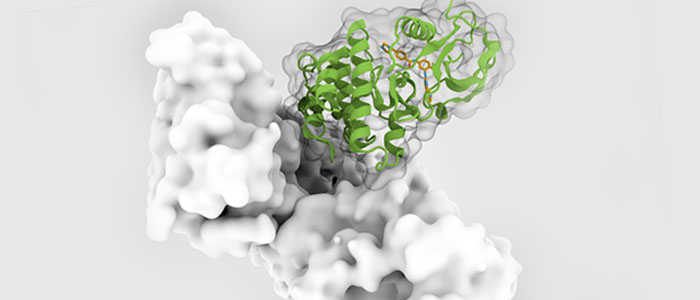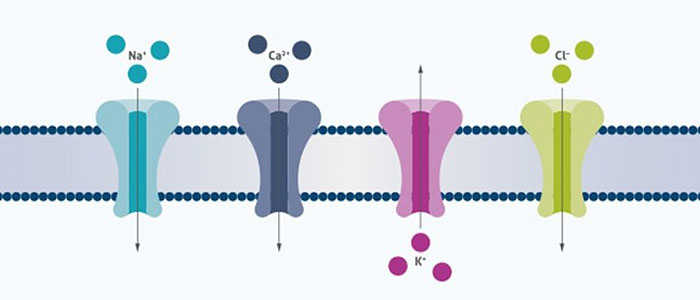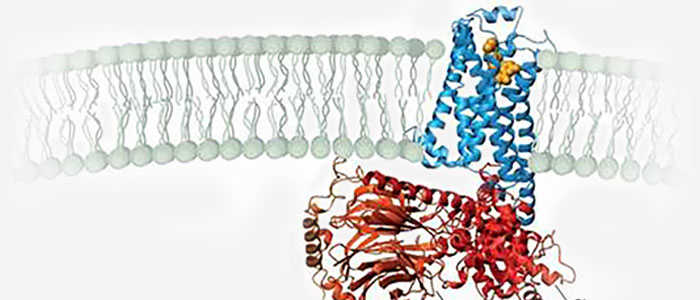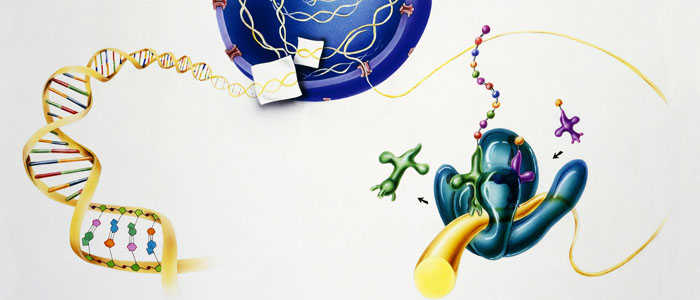Chromatography Reagents
Subcategory
Background
Overview
Chromatographic reagents are a family of chemical agents used in chromatographic analysis that play a key role in separating, detecting, and quantifying various components in a sample. Chromatographic analysis is a powerful separation technology, widely used in chemistry, biology, environmental science, pharmaceutical analysis and other fields.
Chromatographic analysis, referred to as chromatography, is a physical or physicochemical separation analysis method. It is based on the difference between different solutes (samples) and the forces (such as distribution, adsorption, ion exchange, etc.) between the fixed and mobile phases to achieve separation. When the two phases move relative to each other, each solute balances several times in the two phases, so as to achieve the purpose of separation.

Research Progress
The development of chromatography reagents is closely related to the development of chromatography technology. Since its birth in the early 20th century, chromatography technology has undergone several important stages of development, each of which is accompanied by improvements and innovations in chromatographic reagents.
Russian botanist Mikhail Tswett discovered the phenomenon of chromatography in 1903, which is the origin of chromatography technology. He used calcium carbonate as a stationary phase and water as a mobile phase to separate plant pigments, the earliest chromatographic reagents.
In the early 20th century, chromatography technology began to differentiate into different types, such as gas chromatography (GC), liquid chromatography (LC), thin layer chromatography (TLC), and so on. Accordingly, the types of fixed and mobile phases have been expanded and standardized. With the advancement of chemical synthesis technology and materials science, more types of fixed and mobile phases have appeared. For example, the emergence of silica gel and chemically bonded phases (such as C18, C8) has greatly improved the separation efficiency and reproducibility of liquid chromatography.
In the late 20th century, large-scale commercial production of chromatography reagents began, and quality control and standardization became the industry standard. This includes the standardization of the particle size and pore size of the stationary phase, as well as the purification and formulation of the mobile phase solvent.
So far, with the diversification of analytical needs, chromatography reagents are also constantly innovating. For example, in order to improve separation selectivity, chiral stationary phases and special ionic liquids appear as mobile phases. In order to increase detection sensitivity, derivatization reagents have been developed that can convert hard-to-detect components into easy-to-detect forms. Environmental and safety considerations have also driven the development of organic solvent free or low organic solvent chromatography reagents.

Types and Functions of Chromatography Reagents
Stationary phase: The stationary phase is the part of the column that provides a surface with which the components in the sample can interact. The stationary phase can be a solid (e.g. silica gel, alumina) or a liquid (coated on a solid carrier), or it can be a gel or other porous material.
Mobile phase: The mobile phase is the liquid or gas that carries the sample through the column. In high performance liquid chromatography (HPLC), the mobile phase is usually a mixture of water and organic solvents (such as methanol, acetonitrile) whose polarity and composition can be adjusted for analytical purposes.
Eluent: Eluent is a part of the mobile phase used to eluate and separate the sample components from the stationary phase. The choice of eluent is very important to the effect of chromatographic separation.
Detection agents: In some chromatographic methods, such as thin layer chromatography (TLC), specific detection agents are required to visualize chromatographic spots. These detection agents are usually chemicals that react color with the components of the sample.
Derivatization reagents: Derivatization reagents are used to convert certain components of a sample (e.g. amino acids, sugars) into more detectable forms for chromatographic analysis.
Buffers: In ion exchange chromatography (IEC) and other chromatographic methods that require pH control, buffers are used to maintain the pH stability of the mobile phase, which affects the separation of sample components.

Types of Chromatography
High performance Liquid chromatography (HPLC): This is an important branch of chromatography, also known as "high pressure liquid chromatography", "high speed liquid chromatography" and so on. HPLC is widely used for its high separation efficiency, rapid analysis and wide range of applications.
Gas chromatography (GC): It is mainly used for the analysis of volatile and semi-volatile organic compounds, especially in environmental monitoring, drug detection, and petrochemical product analysis.
Thin Layer chromatography (TLC) : This is a relatively simple and economical chromatography technique that is often used for rapid analysis and purity detection.
Ion exchange chromatography: It is mainly used for the separation of ionic compounds, such as proteins, nucleic acids and other biological macromolecules.
Affinity chromatography: The use of specific interactions between biomolecules to separate, often used for the purification of enzymes, antibodies and other bioactive substances.
Gel permeation chromatography (GPC): mainly used for the determination of molecular weight distribution of polymer compounds and polymer characterization.
Ultra-high performance liquid chromatography (UHPLC): UHPLC has higher resolution, speed and sensitivity than HPLC.
Capillary electrophoresis (CE): Although not chromatography in the traditional sense, it is also an analytical technique that uses electric field forces to separate, and is sometimes classified as one of the chromatographic techniques.
Multi-dimensional chromatography: Combining two or more chromatographic techniques to improve separation efficiency and analytical capabilities.

What We Offer
Creative BioMart contains all different types of chromatography at all scales of matrix include: cross-linked agarose, cross-linked cellulose, dextran, methacrylic and polystyrene. According to different chromatographic methods to provide corresponding chromatography reagents, you can find the reagent you need according to the specific method classification. Please contact us for more information.

Affinity chromatography: Affinity chromatography is used to separate substances that have specific biological interactions, such as enzymes and their substrates, antigens and antibodies. The key lies in the choice of stationary phase, usually using ligands with specific affinity, such as proteins, nucleic acids, small molecules, etc. The stationary phase is usually chemically bonded to the matrix of the column.
Ion exchange chromatography: Ion exchange chromatography, based on the charge interaction between molecules, is widely used in the purification of proteins, nucleic acids and other charged molecules. The stationary phase is a charged ion exchange resin or a chemically bonded ion exchange agent, such as a strong acidic cation exchange resin or a strong basic anion exchange resin.
Gel filtration chromatography: Gel filtration chromatography is used for separation according to molecular size and is often used for desalination, protein purification and molecular weight determination of polymers. The stationary phase is a porous gel particle, such as polyacrylamide or dextran.
Multimode chromatography: Multimode chromatography provides a variety of separation mechanisms and is suitable for the purification and analysis of complex samples. The stationary phase combines multiple modes of interaction, such as hydrophobic, ion exchange, and affinity.
Hydrophobic Interaction Chromatography: Hydrophobic interaction chromatography is based on the separation of hydrophobic interactions between molecules and is often used for the purification of proteins and peptides. Stationary phases have hydrophobic properties, such as hydrophobic polymers or chemically bonded hydrophobic groups.
Adsorption chromatography: Adsorption chromatography is a separation method based on intermolecular adsorption, which is suitable for the purification of non-polar to moderately polar compounds. The stationary phase is an adsorbent material such as activated carbon, silica gel or alumina.
Pre-Coupling Magnetic Beads: Pre-Coupling magnetic beads are used for fast and easy sample purification and capture, especially for capturing specific proteins, cells or nucleic acids in biological samples. The surface of the magnetic beads is pre-coupled to specific ligands, such as antibodies, proteins A/G, biotin, or oligonucleotides.
Case Study
Case Study 1: m7GTP Agarose (m7GTP-001A)
The Fragile X-related protein-1 (FXR1) gene is highly amplified in ovarian cancer patients, and this amplification is associated with increased expression of FXR1 mRNA and protein. The expression of FXR1 is directly related to the survival and proliferation of cancer cells. The Surface Translation Sensing (SUnSET) experiment showed that FXR1 enhanced the overall translation of cancer cells. The reversed phase protein Array (RPPA) revealed that cMYC is a key target for FXR1. Mechanically, FXR1 binds to the au rich element (ARE) in the 3' untranslated region (3' utr) of cMYC and stabilizes its expression. In addition, the RGG domain in FXR1 interacts with the eIF4A1 and eIF4E proteins. These two interactions of FXR1 lead to cyclization of cMYC mRNA and promote recruitment of eukaryotic translation initiation factors to translation initiation sites.

(Jasmine George, 2021)
Fig1. HeyA8 cells were transfected with control siRNA or FXR1 siRNAs for 48 h, and lysates were incubated with m7GTP (5′mRNA cap analog).
Case Study 2: Protein G Agarose High Flow Resin (COP28)
Age-related changes in human T-cell populations are important factors in immune aging. In particular, terminally differentiated CD8+ effector memory CD45RA+ TEMRA cells and their subpopulations are characteristic of cellular senescence, accumulating in the elderly and increasing in age-related chronic inflammatory diseases. Detailed T-cell analysis of individuals over 65 years of age showed high inter-individual variation in the CD8+ TEMRA population. CD8+ TEMRA ratio was positively associated with cytomegalovirus (CMV) antibody levels, but not with chronological age. Analysis of more than 90 inflammatory proteins showed that plasma TRANCE/RANKL levels were associated with several differentiated t cell populations, including CD8+ TEMRA and its CD28- subgroup. Given the strong potential of CD8+ TEMRA cells as biomarkers of immune aging, the researchers used sulfite deep amplicon sequencing to match their frequency in flow cytometry to CpG site methylation levels, and developed a computational model to predict the proportion of CD8+ TEMRA cells in whole blood genomic DNA.

(Ahto Salumets, 2022)
Fig2. The levels of anti‐p150d1 and p50d2 antibodies in CMV positive and negative individuals are shown as luminescence units (LU) of luciferase enzyme activity as boxplots.
Case Study 3: Thiopropyl Agarose (Thio-001A)
Protein palmitoylation is a cellular process that occurs at the membrane-cytoplasmic interface and is coordinated by members of the DHHC enzyme family, which plays a key role in regulating various cellular functions. The M2 protein of influenza virus is acylated on the amphiphile helix near the membrane and can be used as a model to study the complex signals that control acylation and its interaction with the homologous enzyme DHHC20. This study shows that altering the biophysical properties of the amphipathic spiral, particularly by shortening or disrupting it, leads to a substantial reduction in M2 palmitoylation, but does not completely abolish the process. Interestingly, DHHC20 showed enhanced affinity for certain M2 mutants compared to the wild-type M2. Molecular dynamics simulations revealed the interaction between helical amino acids and DHHC20's catalytic DHHC and TTXE motifs. The results suggest that the binding of M2 to DHHC20, although not highly specific, is mediated through the necessary contact and may trigger the transfer of fatty acids.

(Xiaorong Meng, 2023)
Fig3. S-acylation: M2 wt and the mutants were expressed in 293 T cells.
Advantages
- Wide range of products: Due to the wide application of chromatography technology, we provide a variety of different types of chromatography reagents, such as gas chromatography reagents, high pressure liquid chromatography reagents, thin layer chromatography reagents, etc., to meet the needs of different customers.
- Strict quality control: We will strictly monitor the quality of the product to ensure the purity and stability of the reagent to meet the high standard of experimental requirements.
- Technical innovation: We focus on the development of chromatography reagents, from the development team to the support team, from the production equipment to the detection method, we guarantee the best.
FAQ
-
Q: What is the purity and quality of chromatographic reagents?
A: In order to ensure the quality and purity of chromatographic reagents, strict quality control and testing are usually carried out, including the detection of absorbance, moisture content, metal ion content, non-volatile matter content, etc., to ensure that the reagent meets the specific chromatographic analysis requirements.
-
Q: Can you provide technical support or guidance when you encounter problems with chromatographic reagents?
A: We provide various services from production to use, such as text materials and online support, which can help customers better understand and use chromatographic reagents, ensure the accuracy and repeatability of chromatographic analysis, and improve user satisfaction and product value.
References
- George J.; et al. RNA-binding protein FXR1 drives cMYC translation by recruiting eIF4F complex to the translation start site. Cell Rep. 2021;37(5):109934.
- Salumets A.; et al. Epigenetic quantification of immunosenescent CD8+ TEMRA cells in human blood. Aging Cell. 2022;21(5):e13607.
- Meng X.; et al. The role of an amphiphilic helix and transmembrane region in the efficient acylation of the M2 protein from influenza virus. Sci Rep. 2023;13(1):18928.
Contact us or send an email at for project quotations and more detailed information.
Quick Links
-

Papers’ PMID to Obtain Coupon
Submit Now -

Refer Friends & New Lab Start-up Promotions








